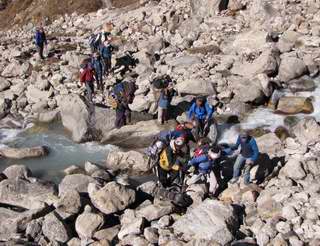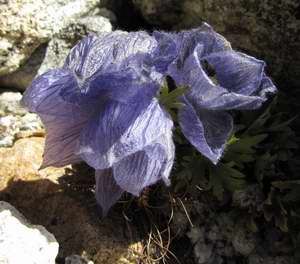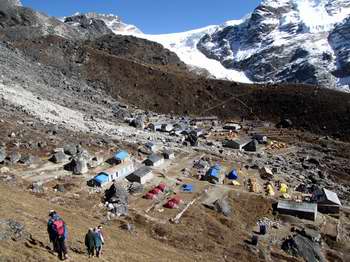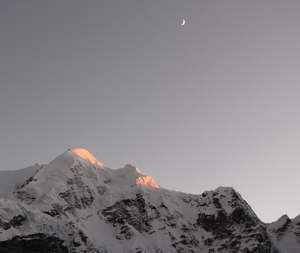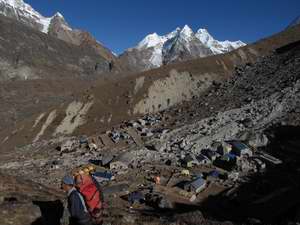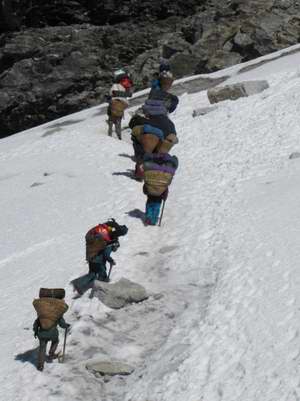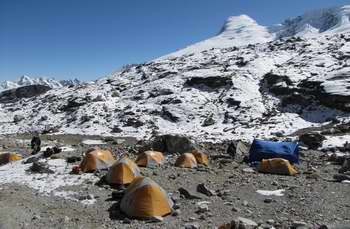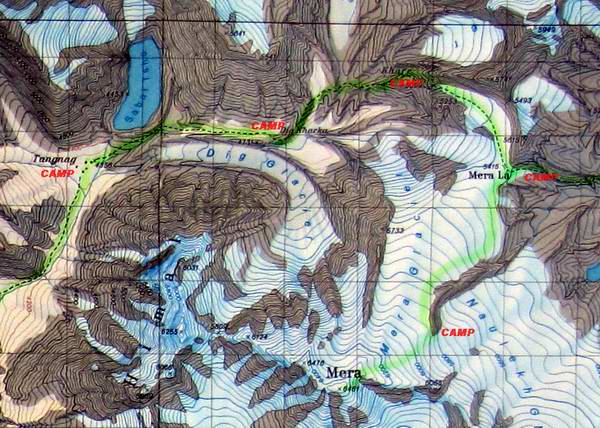
We left Tangnag at 07.45 for the short walk further up the valley to the next camp at Dig Kharka - the short distance would give us a chance to do an afternoon walk higher up & then return back down to the overnight camp - a useful method of acclimatisation. As we set off a helicopter arrived to evacuate a Swedish trekker - the first of several we saw the same day.
The walk started through the braided outflow of glaciers, which had spread rocks right across the flat valley floor. We then climbed up the side of the huge moraine which had once dammed the lake Sabai Tsho shown on the map. However this lake had disappeared, having drained when it broke through the moraine dam, and causing the erosion we had seen downstream. The ground was covered with dried up dwarf shrub, which gave off a heady sage/rosemary smell when trodden on.
The trail we followed was only a narrow path, and even that we left to pick our way through boulders to cross the valley and the river to our camp site tucked on the edge of the valley floor.
We reached the camp site at around 10.00 and were eating lunch by 11.00. During lunch we heard that a second member of our group, Noel, was going to have to be evacuated as he was suffering from chest pains. He prepared to trek back to Tangnag with one of the sherpas, where a helicopter would pick him up.
After lunch we walked up the moraine behind the camp site, climbing around 230m before sitting on rocks to admire the views all around, including Mera Peak.
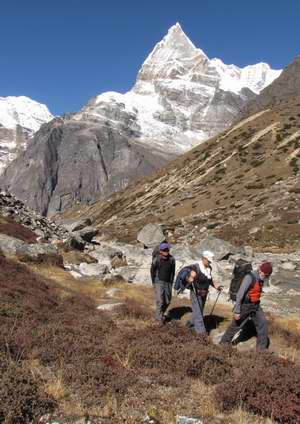
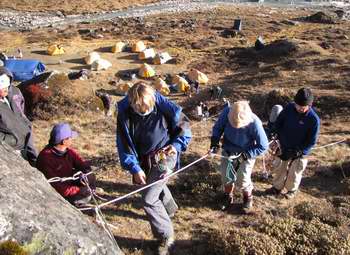
Trying out our climbing skills |
Walking up to Dig Kharka
Back at the camp site the sherpas had set up some fixed ropes, so that we could practice using the jumars (ascenders) going up, and abseiling to get back down. The porters, who had made their home under a huge rock above the camp, looked on with amusement.The temperature dropped like a
stone once the sun dropped behind the
mountains - we were at an altitude of 4,700m after all - and for
the
first time I put on my down jacket for dinner. Dinner was another
typical one with small portions of a variety of items: momos, rice,
noodles, tough meat slices, green peppers, tomatoes, mushrooms and
sauce. Once again dessert was warm tinned fruit salad. By the end of
the meal, when the rum and chocolates were being passed around, the
condensation on the inside of the tent roof was freezing.
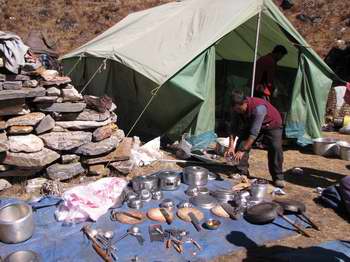
Biri, the chief cook, checks the kitchen equipment |
